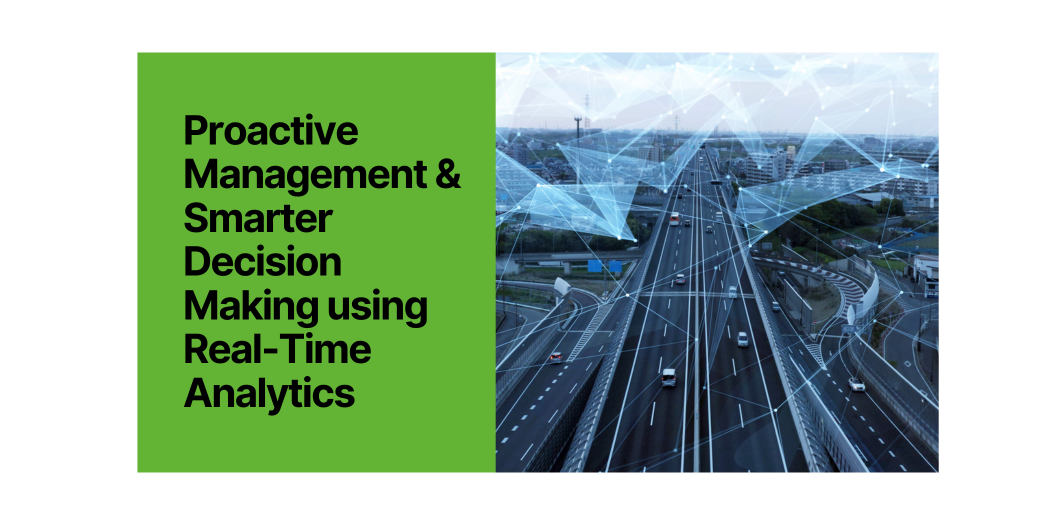Proactive Management & Smarter Decision Making using Real-Time Analytics
Lewis Marston
Feb 7, 2017 4:34:00 PM

Whether you're looking to optimise your business processes or streamline your operations, we have the expertise and experience to help you achieve project success.
Contact us today to discuss your needs further.
Learn how our SAP solution extensions can help your workforce reduce reliance on manual paper based activities and ensuring the ever changing needs of your supply chain operational workforce is supported.
Book a demo to learn more.
We work closely with our clients to understand their unique needs and challenges. Explore our SAP expertise services to learn more.

If you’re managing the operational side of the business then consider embedding real-time analytics into your system. It gives you first-hand actual knowledge about what is happening right now, so you can make more informed decisions and have a greater understanding of your own operation.
By now we all have the appropriate amount of data, we can visualise it in a user friendly way and utilise it accordingly where it’s needed. But we need that daily information feed to actually affect our behaviours and help us achieve our immediate targets and goals, rather than review what we did in the past. Using our data contemporaneously drives us to monitor our targets and know straight away if we are not achieving them. It allows us to change tack accordingly.
For example, a procurement transportation manager has set KPIs and by being able to see the team’s performance as it happens is more likely to encourage the team to achieve at the current rate rather than reporting on them after the event. So if a member of the team is not achieving, we can ask the question “what is preventing that team member from achieving their KPIs today?” and make the appropriate behavioural improvement.
It’s about getting information to the right people in the right part of the business at the right time, and not waiting for the management team to produce reports which become disconnected from the operational processes that were creating those KPIs in the first place.
It’s about taking information to the heart of the operation.
We can do using technologies that weren’t in the previous generations of business systems. They are now as part of the latest user interfaces (UI), with dashboards and visual analytics embedded into a wide range of operational processes.
But more importantly it needs the underlying efficient data structure and in-memory computing to deal with the high volume real-time data handling to help produce these embedded data analytics and KPIs within the same database and applications.
So what new SAP technologies could we be considering to support us with real-time data analytics? With SAP platforms we have two main options, a classic SQL database that you can run on, for example Oracle or Microsoft, or you can run on the in-memory database SAP HANA.
The big jump in enterprise wide systems are in SAP HANA-based environments with new features and functions around the user interface and some really great dashboards.
For organisations that are underpinned by an existing SAP technology strategy, an upgrade from SAP ECC (on SQL database) to HANA can be straight forward and deliver significant process and performance benefits, especially when combined with the introduction of the Fiori user interface and embedded dashboard and analytics. This is a great stepping stone for organisations not yet ready to embark on the move to the latest generation platform, S/4 HANA, in which we see re-invention and simplification of the application with greater innovation for business to run real-time, connected throughout. For those ready to embark on a new generation of business system, SAP S/4 HANA provides significant changes to ways of working with different considerations for upgrading or re-implementation.
For the mid-sized organisation who hasn’t previously invested in any type of operational analytics package or indeed is in need of a business system replacement or transformation there is an exciting opportunity to skip a generation of business systems and move directly onto SAP S/4HANA and benefit from a real-time connected view of their business operations without the expense, complexity and out of date data from a traditionally separate Business Intelligence platform.
Embedded real-time analytics is just the tip of the iceberg. Business systems are undergoing a fundamental shift from traditional process based systems of record, to systems of innovation, not just executing and automating business process but adding ever increasing optimisation and intelligence. It’s a significant shift and has come off the back of being able to handle Big Data and being able to do that real-time with in-memory processing of data coupled with new digital technologies such as the Internet of Things and mobile app proliferation. We explore this further in our future articles in this series.
Moving to in-memory based systems such as those underpinned by SAP HANA transforms business behaviour and performance. From management through to employee, you are more likely to achieve rapid improvement that you can measure, rather than repeating what you have done in the past. In addition, operational management will be more efficient and if your business leaders understand what is happening, they are more likely and able to manage the success of the business with faster smarter decision making and drive continuous improvement through greater understanding.